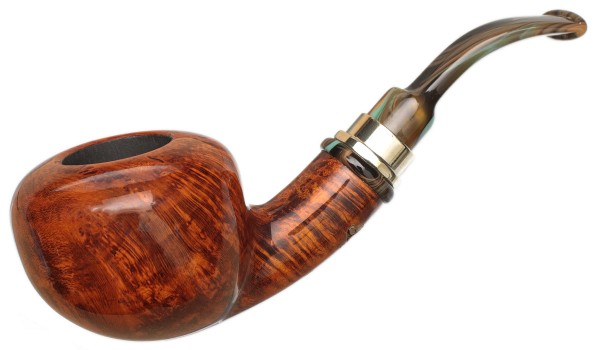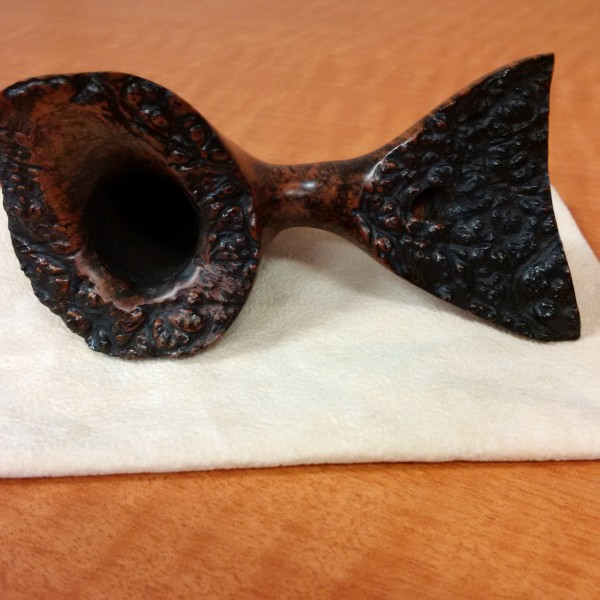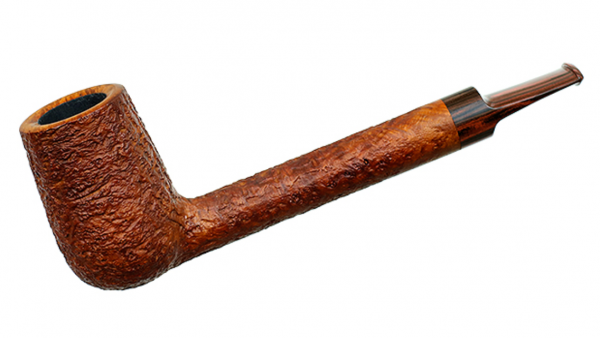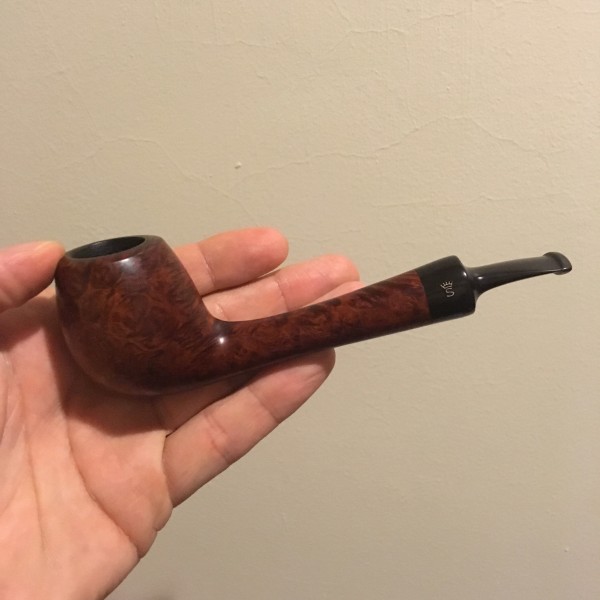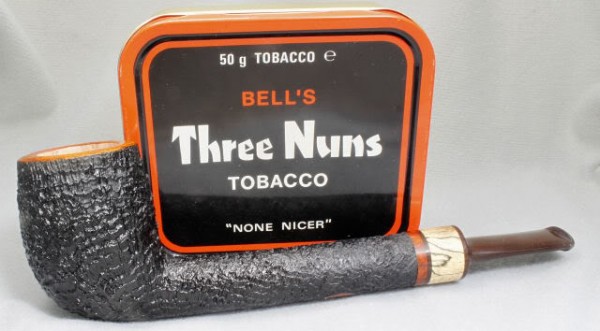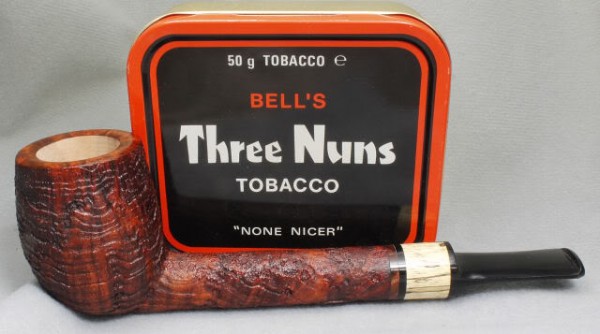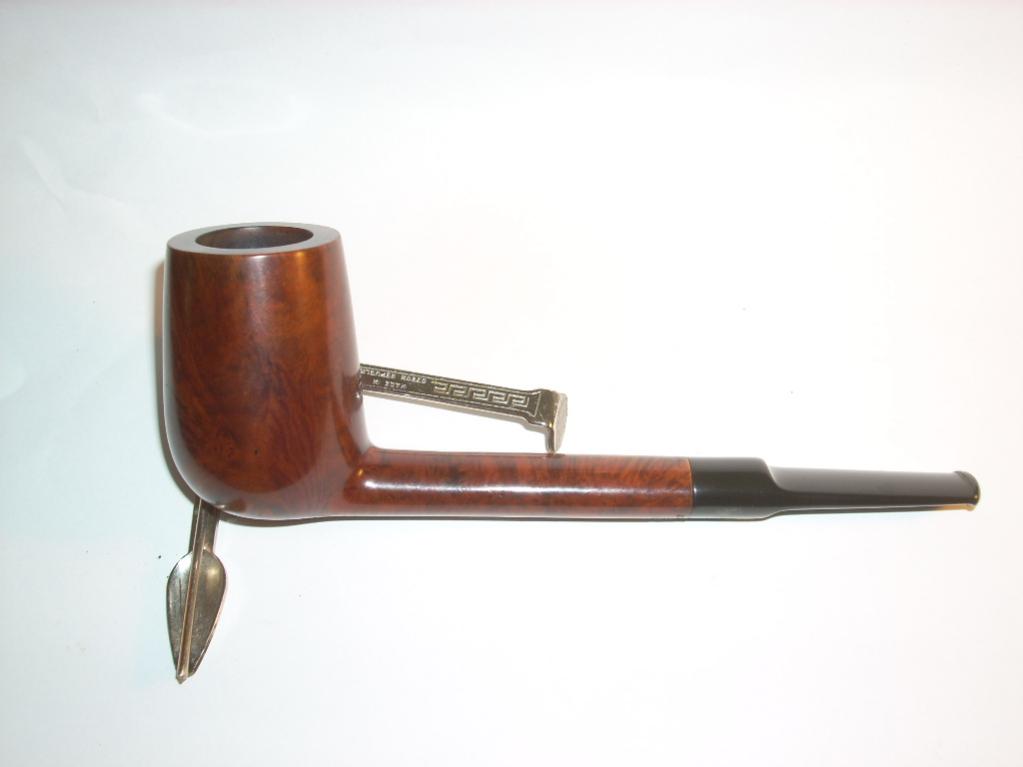Danish School?
- Thread starter tobefrank
- Start date
You are using an out of date browser. It may not display this or other websites correctly.
You should upgrade or use an alternative browser.
You should upgrade or use an alternative browser.
SmokingPipes.com Updates
Watch for Updates Twice a Week
Ha. You know me George, I put a LOT of thought into this stuff, and the resulting distillate is sometimes worthwhile - sometimes not!
But of course, you read it knowing that stuff, and having ideas about it in your head which line up very well with the ones in mine, so you read it and think "EXACTLY!" but I think this stuff is hard to come to grips with, it was for me.
But of course, you read it knowing that stuff, and having ideas about it in your head which line up very well with the ones in mine, so you read it and think "EXACTLY!" but I think this stuff is hard to come to grips with, it was for me.
You could find a number of different explanations to explain the different schools of Pipe Making, but I don't think you could find a better expression of the ideas than in Sasquatches post above. Very well said.
To elaborate a bit with my own thoughts, It's a bit difficult to define each style because they all flow from one another and borrow from one another. The Grandfather of it all of course is the French style of Pipe Making, which more or less invented the ideas that make up the modern pipe. The English took the entire French style and mostly added marketing, but added a bit stylistically and in some cases elevated the quality of construction with a focus on factory style hand made pipes over sheer mass production numbers.
The Danish style evolved from the sort of stodgy British style as described by Sasquatch.
The Japanese school *is* an extension of the Danish school that found it's own voice for expression.
The Italian school (schools) are well described by Sas. There are several styles under the "Italian" banner though. They mostly stem from the individual visions of a handful of pioneers, and are continued today inside the different artisan factories they each created.
The Russians, I don't know where they get it. Somehow "if you drew a cartoon of an animal, made it a robot, and then made it a pipe" is a better explanation than anything I could come up with !
To my mind, the American school is a complete Osmosis of all these different styles, often in the same pipe. My favorite shape is a Lovat. My favorite way to make a Lovat is with a Classically English shaped bowl, with somewhat Italian proportions, and the domed Top and crisp short saddle stem of a Danish billiard. If I want to make a truly classic English shape, I have to consciously change the details I would normally add to a Billiard like the rim of the pipe, the taper of the shank etc. If I want to make a classic Danish shape, I have to consciously change the shape of the bowl and the shank.
I think Americans sort of take what we like best from all the different schools, and make that.
To elaborate a bit with my own thoughts, It's a bit difficult to define each style because they all flow from one another and borrow from one another. The Grandfather of it all of course is the French style of Pipe Making, which more or less invented the ideas that make up the modern pipe. The English took the entire French style and mostly added marketing, but added a bit stylistically and in some cases elevated the quality of construction with a focus on factory style hand made pipes over sheer mass production numbers.
The Danish style evolved from the sort of stodgy British style as described by Sasquatch.
The Japanese school *is* an extension of the Danish school that found it's own voice for expression.
The Italian school (schools) are well described by Sas. There are several styles under the "Italian" banner though. They mostly stem from the individual visions of a handful of pioneers, and are continued today inside the different artisan factories they each created.
The Russians, I don't know where they get it. Somehow "if you drew a cartoon of an animal, made it a robot, and then made it a pipe" is a better explanation than anything I could come up with !
To my mind, the American school is a complete Osmosis of all these different styles, often in the same pipe. My favorite shape is a Lovat. My favorite way to make a Lovat is with a Classically English shaped bowl, with somewhat Italian proportions, and the domed Top and crisp short saddle stem of a Danish billiard. If I want to make a truly classic English shape, I have to consciously change the details I would normally add to a Billiard like the rim of the pipe, the taper of the shank etc. If I want to make a classic Danish shape, I have to consciously change the shape of the bowl and the shank.
I think Americans sort of take what we like best from all the different schools, and make that.
Sable - try this on for size: There is a definite American School. But not every American carver performs inside the tenets of that school - Piersel and Erck would be good examples. Ernie Markle is American but makes Danish pipes, outright - that was his goal.
But there is an American School and it blends Danish and English traditions, it seeks proper proportion without being stodgy. It does NOT seek for crazy stuff like reverse bumblebee tunafish like the Russians, as a counterpoint. And finishing. Finishing finishing finishing (something the Russians are less careful with).
I'd put Mycah Cryder and Todd Johnson at the far end of the shape exploration spectrum (TJ being highly influenced by both Danish and Japanese, but having healthy respect for English), a guy like Abe Herbaugh is not quite as far out there, Ryan Alden and Rad when he was carving are more traditional yet, and again, I'll argue that a pipe like this here is an "American School" pipe even if it's made in Canada. Tight, tight shaping, the pipe is "right", but the color scheme isn't English, neither are the curves.

Contrast this with a really "Italian" version - more color, more chin, utterly arrogant shaping. More curves!

Here's a more "English" Oom Paul - stem is not quite as severely shouldered, cut is tight but the blast is deep enough to "unshape" it a bit - a faux pas in the Danish school.

So it's not just that I live in Canada so I carve in the Canadian School. There are recognizeable, distinct elements in pipe shaping/finishing.
But there is an American School and it blends Danish and English traditions, it seeks proper proportion without being stodgy. It does NOT seek for crazy stuff like reverse bumblebee tunafish like the Russians, as a counterpoint. And finishing. Finishing finishing finishing (something the Russians are less careful with).
I'd put Mycah Cryder and Todd Johnson at the far end of the shape exploration spectrum (TJ being highly influenced by both Danish and Japanese, but having healthy respect for English), a guy like Abe Herbaugh is not quite as far out there, Ryan Alden and Rad when he was carving are more traditional yet, and again, I'll argue that a pipe like this here is an "American School" pipe even if it's made in Canada. Tight, tight shaping, the pipe is "right", but the color scheme isn't English, neither are the curves.

Contrast this with a really "Italian" version - more color, more chin, utterly arrogant shaping. More curves!

Here's a more "English" Oom Paul - stem is not quite as severely shouldered, cut is tight but the blast is deep enough to "unshape" it a bit - a faux pas in the Danish school.

So it's not just that I live in Canada so I carve in the Canadian School. There are recognizeable, distinct elements in pipe shaping/finishing.
Two pipes from two American (Old) School pipe makers. These two pipes completely changed the way I thought about pipes. I bought these about ten years ago, up until that time I had mostly traditional shapes. These two pipes revealed to me the sculptural potential of a pipe. The sitter is a Mark Tinsky Pristine 6 One Star, the bent is an eight sided Paneled Dublin carved by Curt Rollar in 1982.
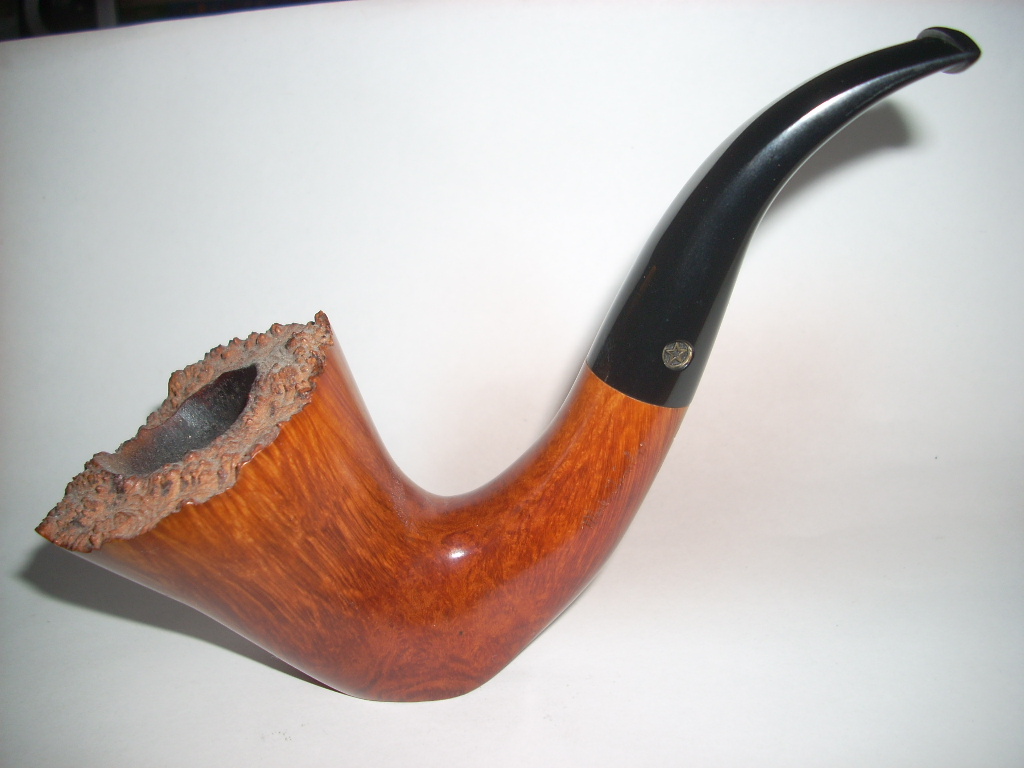
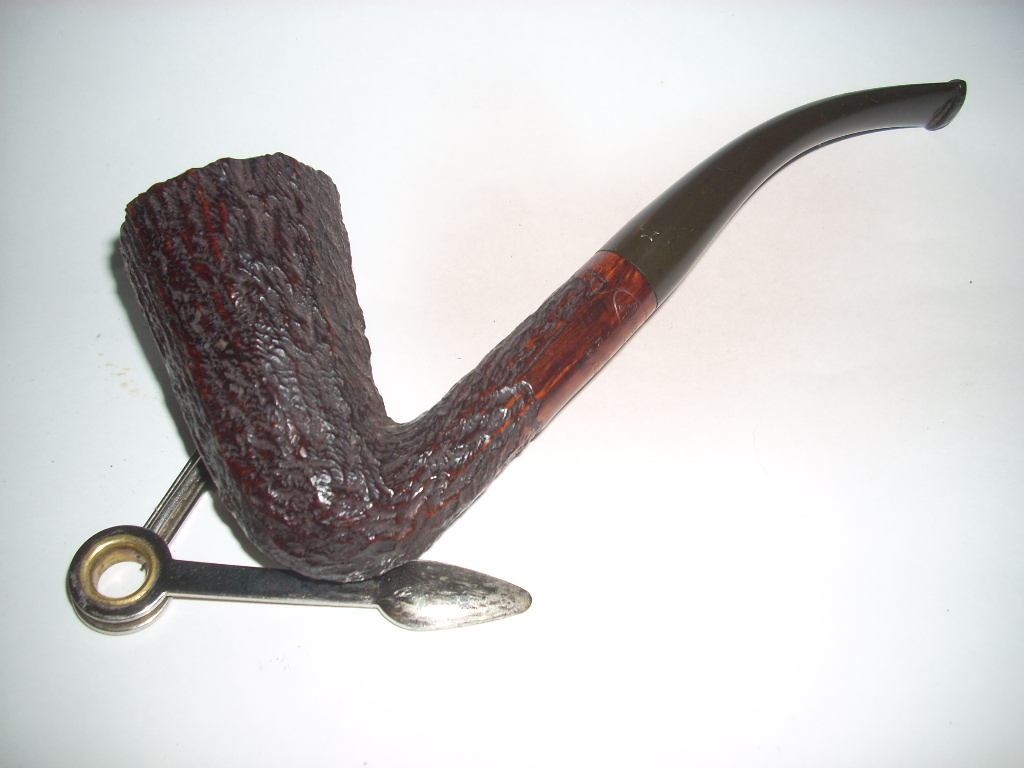
:D


:D
As long as we're diving in, my overriding sentiment concerning this school business has nothing to do with style, but execution.
What does execution have to do with school or style, you ask?
Good question. It SHOULDN'T have anything to do with either... but sloppy, rushed-looking execution---primarily with regard to shaping (as opposed to finish)---is so commonly found on Italian pipes that it has BECOME a de facto component of the style.
Some Italian marques are better than others in this respect, but all of them suffer from it to some degree, and sometimes it is flat-out egregious, such as with the following example.
(NOTE: There are still a number of line problems with the overlaid "fix"... the markings only serve to point out the "Are you shitting me?" stuff on the existing not-so-hot overall shape.)
.

What does execution have to do with school or style, you ask?
Good question. It SHOULDN'T have anything to do with either... but sloppy, rushed-looking execution---primarily with regard to shaping (as opposed to finish)---is so commonly found on Italian pipes that it has BECOME a de facto component of the style.
Some Italian marques are better than others in this respect, but all of them suffer from it to some degree, and sometimes it is flat-out egregious, such as with the following example.
(NOTE: There are still a number of line problems with the overlaid "fix"... the markings only serve to point out the "Are you shitting me?" stuff on the existing not-so-hot overall shape.)
.

Thanks so much for all the great responses and discussion, especially Sasquatch and Sablebrush.
I guess I have seen a lot of the different ‘schools’ of pipe making by browsing the smokingpipes.com website, but I’ve never seen the differences and characteristics put into words this well.
I think I have finally worked out how to post photos, so here photos of my two favourite pipes. Both lovats, but both very different.
Bruce Weaver

Stanwell 124

I guess I have seen a lot of the different ‘schools’ of pipe making by browsing the smokingpipes.com website, but I’ve never seen the differences and characteristics put into words this well.
I think I have finally worked out how to post photos, so here photos of my two favourite pipes. Both lovats, but both very different.
Bruce Weaver

Stanwell 124

Yeah tough isn't it? Once you learn how to post a picture, you have have truly mastered the art of pipesmoking.
George, I hate having to say it, much as I love Italian pipes (Lorenzo, Sav, & Brebbia mainly) but you're right -- the bowl radiusing & threw-a-couple-of-darts-maybe? stem shaping on that one are just dear-Lord-heinous.
Tell the tuth, I really hadn't *thought* much about it at all, although I of course *had* noted the differences between early & late Holm. I much prefer the wilder ones, like mau's whale tail; maybe it's just because they're more abstract & out there.
TBH, the stuff Preben did on the Ben Wade name never really did much for me, swoopy as they were. I think it was because after a while they just all looked alike, know what I mean?
Bill
Tell the tuth, I really hadn't *thought* much about it at all, although I of course *had* noted the differences between early & late Holm. I much prefer the wilder ones, like mau's whale tail; maybe it's just because they're more abstract & out there.
TBH, the stuff Preben did on the Ben Wade name never really did much for me, swoopy as they were. I think it was because after a while they just all looked alike, know what I mean?
Bill
So that Weaver lovat has elements of Danish - the bowl shape being jowl-heavy rather than sort of a barrel proper is a very Danish approach to billiard bowls, for example. I would suggest it's cut with the bowl at 90 degrees which is very Italian, and neither English nor Danish. Shank is heavier than an English/French cut, and frankly the stem work is 100% better than either as well, so to me, that's an American school pipe. An intentional blend of a bunch of ideas.
The Stanwell is Danish in design and execution, flared long curves on the shank (matching the curvy ideas of the bowl), a playful stretch of the shank and a reflection of that in the foreshortened stem, where all the recurve happens in a 1/2"! Visual balance added by that heavy saddle, so the pipe is aesthetically really pleasing and balanced.
Bill, I think lots of stuff got stamped "Preben Holm" or done under Ben Wade stamping where Preben was maybe ... in the factory somewhere, but not maybe making those specific pipes by the truckload every day. If I peruse eBay and look at Preben Holm stuff, about 1 in 20 or 1 in 50 strike me as being really, really good freehands - organic and interesting, balanced and intentional, rather than just a sort of organ-shaped lump, and I assume those are actual Preben-made pieces.
The Stanwell is Danish in design and execution, flared long curves on the shank (matching the curvy ideas of the bowl), a playful stretch of the shank and a reflection of that in the foreshortened stem, where all the recurve happens in a 1/2"! Visual balance added by that heavy saddle, so the pipe is aesthetically really pleasing and balanced.
Bill, I think lots of stuff got stamped "Preben Holm" or done under Ben Wade stamping where Preben was maybe ... in the factory somewhere, but not maybe making those specific pipes by the truckload every day. If I peruse eBay and look at Preben Holm stuff, about 1 in 20 or 1 in 50 strike me as being really, really good freehands - organic and interesting, balanced and intentional, rather than just a sort of organ-shaped lump, and I assume those are actual Preben-made pieces.
Harris, let's run through the visual, stem to bowl - the stem is really well cut, fine shouldering, good looking buttons. The adornment is pretty big on that barrel, but it's a pretty large diameter and I think it's not TOO big, which is to say it adds some visual definition against the bowl size (and the smooth rim which also attracts the eye). Shanks look pretty straight (not seeing taper in either direction really, but it's hard to tell on blasts).
The bowl on the black pipe is...not as good as on the red. The chin is over cut lending a Dublin-ish look to what is really a billiard shape. The red pipe is chubbier, looks like a better billiard shape to me. And really this is just to say that it's easier to slightly miss a billiard shape than to get it.
They're not factory pipes, they're not Danish because the shaping frankly isn't quite good enough and the blast is too good, as it were. Stem work is good and the shanks maybe just a hair heavy, so to me these are American School pipes, if Rad made them I wouldn't be surprised, but a guy like Wayne Teipen comes to mind too.
These are fusion-pipes, right? English stem material, Danish bowl treatment, English Blasting ideals, that tamarind or spalted birch detail on the stem is.. a bit busy for most Danish makers. But the whole pipe for the most part is excellently constructed, so I call American.
The bowl on the black pipe is...not as good as on the red. The chin is over cut lending a Dublin-ish look to what is really a billiard shape. The red pipe is chubbier, looks like a better billiard shape to me. And really this is just to say that it's easier to slightly miss a billiard shape than to get it.
They're not factory pipes, they're not Danish because the shaping frankly isn't quite good enough and the blast is too good, as it were. Stem work is good and the shanks maybe just a hair heavy, so to me these are American School pipes, if Rad made them I wouldn't be surprised, but a guy like Wayne Teipen comes to mind too.
These are fusion-pipes, right? English stem material, Danish bowl treatment, English Blasting ideals, that tamarind or spalted birch detail on the stem is.. a bit busy for most Danish makers. But the whole pipe for the most part is excellently constructed, so I call American.
And for what it's worth, to anyone listening, this stuff gets strange: the two guys I learned probably the most about pipe making from are Rad and Todd Johnson, and I don't especially like most of the pipes either of those guys made. I see that they are good pipes, but my own personal aesthetic doesn't match theirs, even if they taught me pipe aesthetics. So the idea that we are trying to make one homogenous thing here by rote is not applicable - it's not that there's some single set of rules, it's more, as I think George said earlier, a set of ideas, a "feeling" that is portrayed through execution.
Sas, you are right they are both Rads, great eye. I am amazed at how you so easily explain why one thing is good and another not so good. I have never looked at a pipe with that kind of detail. My eye sees a couple of nice looking pipes that I figure should smoke great because of who made them.
When I was getting going, I had a choice about my pipes. I could make whatever thing I imagined, and do it just "my way" and basically it would be an ugly piece of crap. If I took that ugly piece of crap and asked Rad or Todd or Mark Tinsky or whoever the hell would talk to me, and if I did what they said to do... the pipe sold. So these guys knew some kind of magic formula, they had some power that I didn't have and couldn't understand - all I saw everywhere I looked was nice pipes.
Guys like George and Rad and Bruce helped me learn what made a pipe "right". I could drill them, make a stem, whatever, but that final touch of "and now people will line up to buy these" was missing for me, and I had to struggle to understand the aesthetics of beauty in general, and in pipes in specific. Along that path, I looked hard at the various schools, what makes something Japanese-y for example, and I looked hard at the difference between something badly done and something done well that I don't particularly like, and that's really slippery stuff when it comes to pipes. But the end result, for me, is that I can now see "good work" even if it's not something I find I would want to own. And the aesthetic(s) that I build my pipes with may not appeal to certain folk - but it's been a long time since anyone's had genuine aesthetic criticism for me (possibly because my pipes are so stripped down at this point there's just nothing left to change).
Guys like George and Rad and Bruce helped me learn what made a pipe "right". I could drill them, make a stem, whatever, but that final touch of "and now people will line up to buy these" was missing for me, and I had to struggle to understand the aesthetics of beauty in general, and in pipes in specific. Along that path, I looked hard at the various schools, what makes something Japanese-y for example, and I looked hard at the difference between something badly done and something done well that I don't particularly like, and that's really slippery stuff when it comes to pipes. But the end result, for me, is that I can now see "good work" even if it's not something I find I would want to own. And the aesthetic(s) that I build my pipes with may not appeal to certain folk - but it's been a long time since anyone's had genuine aesthetic criticism for me (possibly because my pipes are so stripped down at this point there's just nothing left to change).






